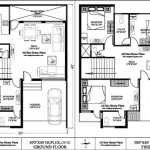Essential Aspects of City of Edmonton Property Plans
Property plans are crucial documents that provide a comprehensive overview of a property's features, boundaries, and zoning regulations. The City of Edmonton requires property owners to obtain a property plan for various purposes, such as development, construction, and subdivision. Here's an in-depth look at the essential aspects of City of Edmonton property plans:
Scope and Purpose
A property plan is a scaled drawing that accurately represents the dimensions, features, and boundaries of a property. It typically includes details such as the location of buildings, structures, easements, setbacks, and utilities. The purpose of a property plan is to provide a comprehensive visual representation of the property and its relationship to the surrounding area.
Legal Significance
Property plans are legally binding documents that serve as a record of the property's official boundaries and features. They are often referenced in legal documents, such as deeds, mortgages, and property agreements. In case of disputes or legal issues involving a property, the property plan serves as an authoritative source of information.
Zoning Regulations
One of the most important aspects of a property plan is the zoning information it provides. Zoning regulations determine the permitted uses of land within specific areas of the city. Property plans clearly indicate the zoning designation of the property, which can affect development potential, permitted activities, and building requirements.
Building and Development Regulations
Property plans also include information about building and development regulations. These regulations specify requirements related to building setbacks, height restrictions, and other aspects of construction. By consulting the property plan, property owners can ensure that their development plans comply with the applicable regulations.
Access and Easements
Property plans show the location of access points, such as driveways and walkways, as well as any easements that affect the property. Easements are legal agreements that grant specific rights of access or use to another party, such as utility companies or neighboring landowners. Understanding easement locations is crucial for avoiding conflicts and ensuring proper property use.
Utilities and Infrastructure
Property plans often include information about the location of utilities and infrastructure, such as gas lines, water mains, and sewer lines. This information is essential for planning construction projects and ensuring that new developments have access to the necessary utilities.
How to Obtain a Property Plan
To obtain a property plan for your property in Edmonton, you can contact the City of Edmonton's Development Services department. The department maintains a database of property plans and can provide copies upon request. You may be required to pay a fee for the plan, depending on the size and complexity of the property.
Property plans are essential documents that provide valuable information about the features, boundaries, and regulations associated with a property. By understanding the essential aspects of City of Edmonton property plans, you can make informed decisions about the use, development, and management of your property.

Edmonton Considers New Standard To Control Urban Sprawl Cbc News

Warehouse Park City Of Edmonton

Edmonton Outlines Future Development With New City District Plans Cbc News

District Planning City Of Edmonton

Zoning Bylaw City Of Edmonton

Planning And Development S Telling Us What You Think City Of Edmonton

Property Taxes City Of Edmonton

Development Process City Of Edmonton

Assessment Of Properties City Edmonton

New Single Family House Permit City Of Edmonton








